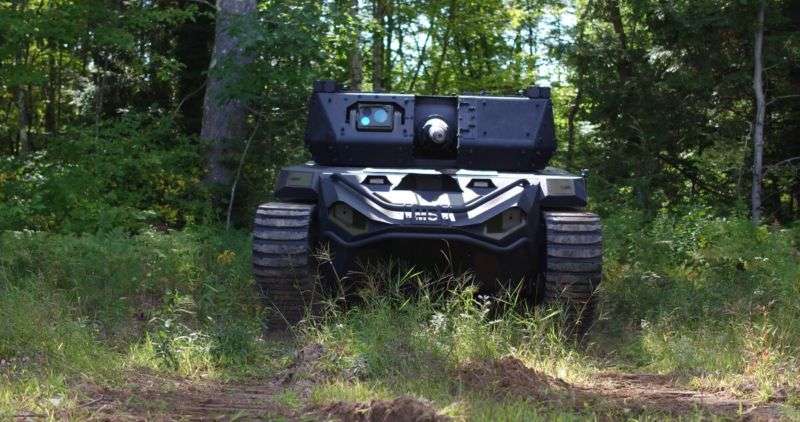
Robo-tank? Army picks contenders for robotic combat vehicle competition

On October 18, the National Advanced Mobility Consortium—an organization of industry and academic researchers contracted by the US government to develop autonomous ground systems for the military—announced the selection of four companies to build prototype light robotic combat vehicles for the US Army. These are “non-developmental” prototypes, meaning they’re based on existing technologies that could be turned into deployable systems with relatively minor modifications.
The Robotic Combat Vehicle-Light (RCV-L) program is part of the Army Futures Command’s Next Generation Combat Vehicle effort. It seeks to provide soldiers in mechanized infantry and armor units with robotic “wingmen” that extend their reach and effectiveness on the battlefield. The Army hopes to have prototypes of the RCV-L as well as a heavier vehicle (the Robotic Combat Vehicle-Medium) in full testing in 2020. Two of each design will be fielded as “platoons” for testing, with the goal of wide deployment of tankbots by 2028.
Working in concert with new crewed combat vehicles, the robotic vehicles would provide additional sensors and firepower to bring to bear on an enemy in the field. By using robots to make the “first contact” with an enemy, unit commanders would be given more time to make decisions before committing human soldiers to the fight—or at least, that’s the doctrinal thinking behind the Army’s robotic combat crew goals.
The four companies chosen to develop the first prototypes are HDT Global, Oshkosh Defense, QinetiQ, and Textron. Each has already fielded some combination of ground vehicle and robotic systems—some of which have already been evaluated in some form by the Army. Textron’s entry is based on its Howe & Howe unit’s Ripsaw M5 (a derivative of a light tracked all-terrain vehicle made almost famous by its role in Fate of the Furious).
Textron is partnering with sensor maker FLIR for its design for the RCV-L competition, which it displayed at this month’s Association of the US Army annual event in Washington, DC. The Army began evaluating remote-controlled versions of the Ripsaw a decade ago.
QinetiQ, known largely for its smaller military robots—including the Modular Advanced Armed Robotic System (MAARS), a small tracked, armed reconnaissance and security robot—has teamed with Pratt & Miller to put together a prototype based on the Expeditionary Modular Autonomous Vehicle. The EMAV and Ripper took part in an Army NGCV robotic-combat-vehicle demonstration event in Texas in May.
HDT Global manufactures the Storm and Sword special operations tactical vehicles. It also produces the Protector (a hybrid-electric tracked, modular robot designed for support of infantry units) and the Hunter Wheeled Offload Logistics Follower (WOLF), a six-wheeled robotic support vehicle that is a contender for the Army’s Squad Maneuver Equipment Transport (SMET) robotic gear-hauler program.
Then there’s Oshkosh Defense, which manufactures the Joint Light Tactical Vehicle and a number of other military vehicles. Oshkosh has demonstrated an autonomous system for convoyed vehicles called TerraMax, which allows one operator to control up to five uncrewed vehicles.
The Army is not waiting for the prototypes to begin its testing of joint robot-human operations. Testing of Next Generation Combat Vehicle control systems for the robotic vehicles will begin in March, using modified Bradley Armored Fighting Vehicles configured as “Mission Enabler Technologies-Demonstrators” (MET-Ds) to control the robotic platforms. The first tests will use four automated M113 armored personnel carriers as “surrogates;” future tests will incorporate the prototype platoons along with the M113s.




